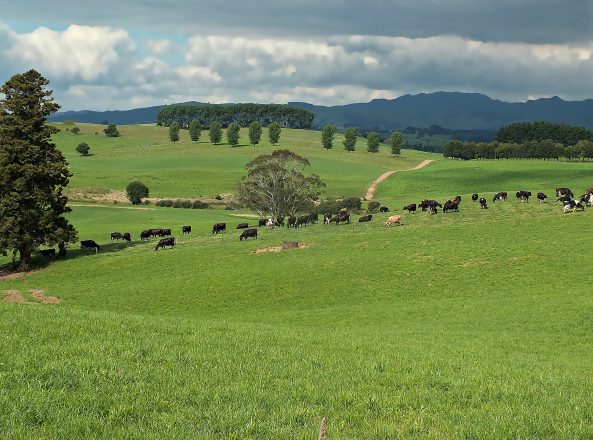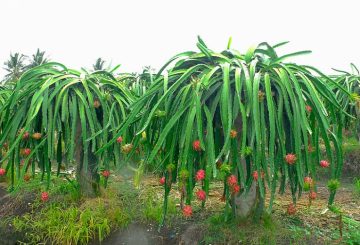農業分野での排出量をどのように支払うべきかは、来週からニュージーランドの地方で開催される一連の会議で議論される予定です。
2019年、政府は2025年から農家が排出量の算定を開始することを発表し、農家には排出量の算定と価格付けを行うための時間が与えられました。
Dairy NZ(NZの酪農生産者団体)やBeef and Lamb NZなどの団体が参加する業界パートナーシップHe Waka Eke Noa(私たちは同じ船(ワカ)に乗った仲間です、という意味のマオリ語)は、排出量の支払い方法として2つの選択肢を考え出し、来週から始まる全国説明会で農家に提案する予定です。
最初の案では、農家は農場レベルでの純排出量を支払うことになります。2番目の案は、農家から受け取った製品の量に基づき、加工業者レベルで排出量を計算するものです。
今回の説明会で得られた意見をもとに、He Waka Eke Noaは4月に政府に提出する案を1つに絞る予定です。
政府が承認しない場合、農業排出権はN排出量取引制度に組み込まれることになります。
Covid-19(新型コロナウイルス)対策の信号システムが「赤」設定になったため、いくつかの会議はオンラインウェビナーに変更され、その他の会議は1週間延期されました。
Beef and Lamb NZのAndrew Morrison会長は、説明会の調整に時間がかかるため、スケジュールの延長を検討していると語りました。
Federated Farmers(ニュージーランド農民連盟)のAndrew Hoggard会長は、国内の食卓を確保するために忙しいため、農家が説明会に参加するにはベストな時期ではないと述べました。
「私は首相に、排出量取引の選択肢に対する我々のセクターの回答期限である4月30日を、国が信号システムの設定を「オレンジ」に戻すまで延期するよう要請する手紙を出しました。」
「農家は適切な協議プロセスを経て、このテーマについて意見を述べる機会を得るべきであり、話し合いは顔を合わせて行う必要があります。特にインターネットが不自由な地域もある中、オンラインで行うのは不公平で非現実的です。」
また、ニュージーランド国民全員が安全を確保し、「感染拡大」の可能性を避けるよう求められているのに、農民などが会議に出席することを期待するのは不公平だと、Hoggard会長は述べました。
首相はコメントを求められています。
答えが出るのを楽しみにしている農家の方々 ハワーデンの羊・牛・鹿農家のAndrew Rutherfordさんは、2つの案を一目見て、地元の会合に参加するのを楽しみにしていました。
「多くの人がそうであるように、私も答えを求めています。本当に複雑なことなので、自分の頭を整理するのにいいでしょう。一番知りたいのは、どれくらいの費用がかかるかということです。
もし、Rutherfordさんが選択肢を選ぶとしたら、農家が排出量を相殺するために行っている作業を考慮し、農場内賦課金を選ぶでしょう。
「私たちは、カーボンフットプリントを低くすることの重要性と、そうすることで得られる利益を理解しています。私たちの羊毛は、Merino NZを通して販売されますが、Merino NZは私たちのカーボンフットプリントの低さをマーケティング上、プラスの要素として活用しています。
「農園には多くの原生林があり、父は何年も前から植樹に力を注いできました。もし私たちが農園で行っていることが報われるなら、他の人も同じことをするようになるでしょう。」
ノース・カンタベリーの農業指導者Winton Dalley氏は、この地域の多くの農家は、これまで He Waka Eke Noaのプロセスにあまり関心を示しませんでしたが、オンラインでも直接でも、いずれかの会合に足を運ぶよう呼びかけています、と述べました。
「私は、彼らが間違っていると思うことを伝えに行くつもりです。彼らは誠実に良い選択肢を取ろうとしていると思いますが、現実はどちらも農業にとって不公平なものです。
このような事態を招いたのは、前政権が農業の排出量をパリ協定にしてしまったことであり、それを解くのはおそらくかなり難しいでしょう。しかし、現実には家畜からの排出量や農場での炭素の固定化が正確かつ公平に説明されておらず、大きな問題となっています。」
Dalley氏は、時間を戻して、もう一度このプロセスをやり直したいと言っています。
「現実的に考えて、今のところ、そんなことをする大臣や政府はないでしょうから、人々は選択肢の中から選ばざるを得ないのでしょう」と、彼は語りました。
農家は専門知識がなく、科学を理解していない人が多いため、プロセスに関与しないことに罪悪感を抱いていた、と彼は言います。
「しかし、より理解を深め、質問をするために、人々が会議に参加することは重要です。」






























































